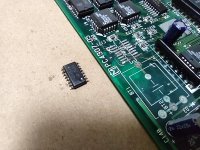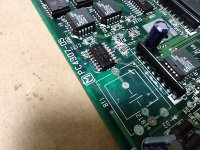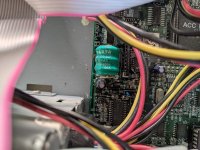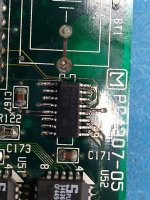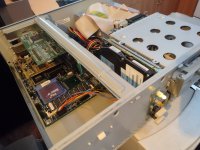Rubix
Experienced Member
- Joined
- May 20, 2007
- Messages
- 163
Hi all, I have a 486 board in a nice Packard Bell that I am trying to save. Due to a leaking battery, a chip came loose from the board. I have tried re-soldering it with solder paste, but the paste doesn't stick to the metal, possibly because of the corroded surface. I have tried some other methods, but I don't have the skill do repair it. I am hoping that someone here has the steady hand and soldering skill to repair this for me. Just let me know what you think is a fair deal in return. I can ship the board.
Thank you!
Thank you!

